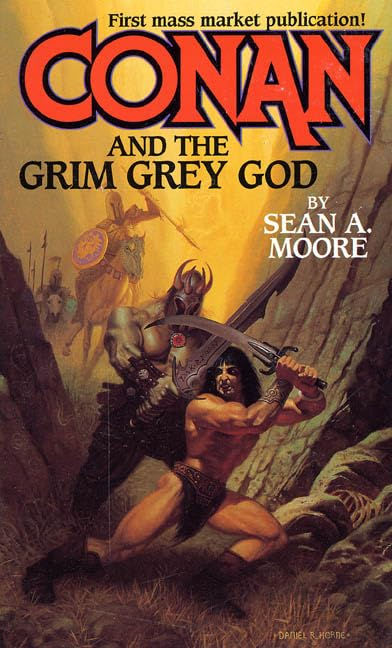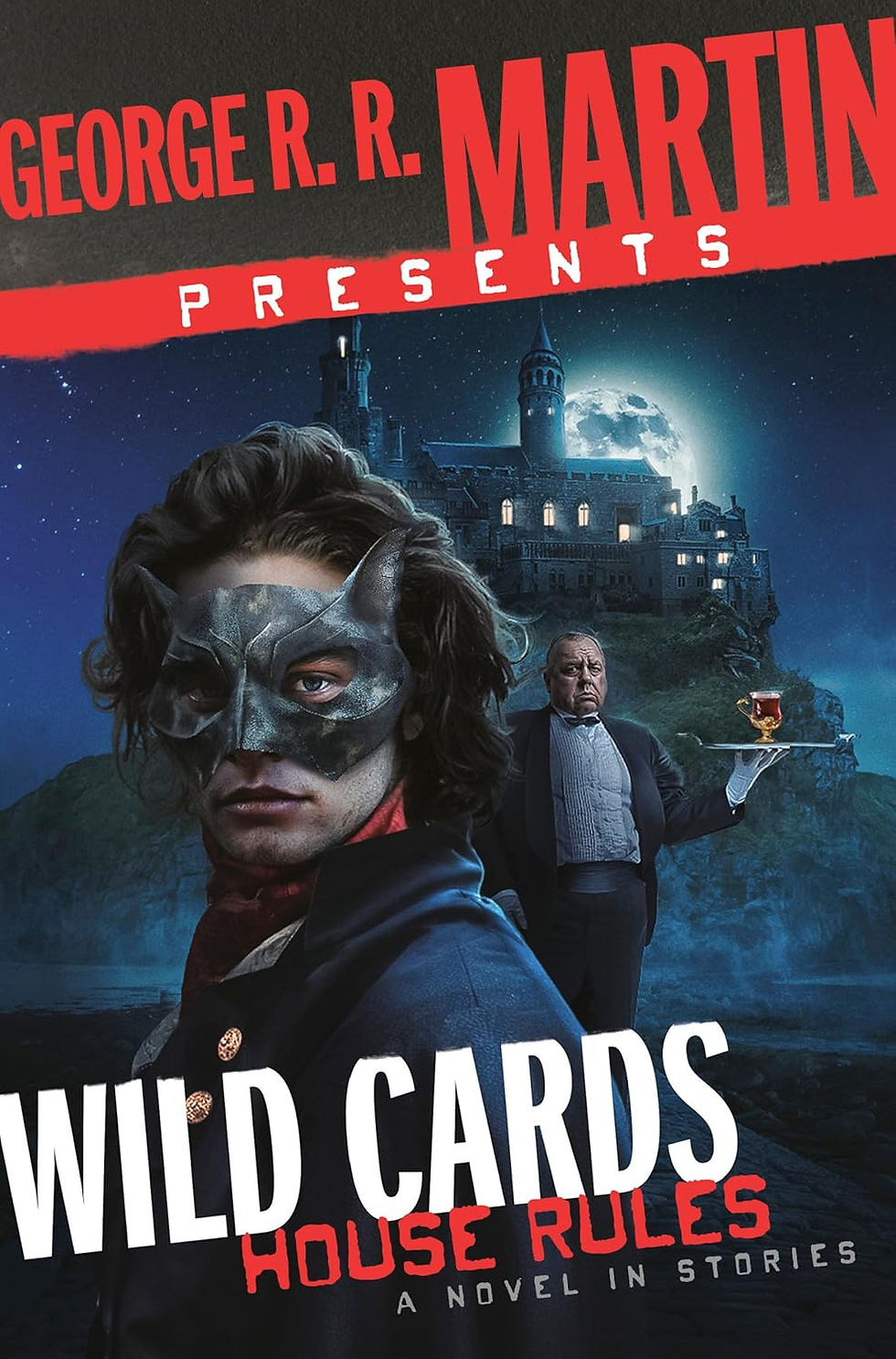Every Hero Needs A Hand Sometimes
- cyborgcaveman
- Feb 13, 2023
- 5 min read
Updated: Apr 11, 2023
The Chronicles of Corum
by Michael Moorcock

The Swords Trilogy, comprised of The Knight of Swords, The Queen of Swords, and The King of Swords, is the story of Corum Jhalen Irsei, the Prince in the Scarlet Robe, last survivor of an ancient race. Corum's people are the Vadhagh; tall, stately elf-like beings that often have more in common with Vulcans, the space-elves of Star Trek, than they do Tolkein's gang. They spend their extended lives composing music, studying the stars, and so on. Weapons and warfare, which Corum has studied, are outdated abstractions. Their greatest sin is complacency, but it proves fatal. An ascendant human race, barely risen from naked barbarism and known in Corum's time as the Mabden, wipes out both elder races to precede them, Nadragh and Vadhagh.
Corum's family is slaughtered and the prince himself is tortured and mutilated. Corum loses a hand and an eye before slipping from the clutches of his torturer, the worst of all humans, Earl Glandyth-a-Krae. Glandyth is a greasy, gross, and depraved piece of scenery-chewing villainy. He survives cockroach-like, despised but often overlooked, while cosmic forces manipulate Corum to wage war against the actual powers behind the savage Mabden ascendancy-- the Sword Rulers, Lords of Chaos and rulers of the Fifteen Planes of existence.
Structurally, the story is tight as a drum. Three novels, one Sword Ruler to each book, each naturally leading into the other. Corum gains power, fights minibosses, and takes out a BBEG in each installment in a way that both echoes classic myth and presages the structure of video games for decades to come. The story beats come at the expected times and often in the expected ways, but with Chaos itself as the theme for his villains' Moorcock can make the most traditional quest moments (pass this boundary, go to this city, retrieve this artifact, slay this monster, meet this ally, etc.) a mind-bending, bad acid trip of random imagery and weird creatures. And I mean that in the best possible way.
Escaping a dungeon in a giant collapsible kite, castles made of liquid blood suspended in the air, a deadly shark with crimson bat-like wings, insane lakes that babble in hundreds of voices, a wizard that builds heroes put of spare body parts, horned bears armed with shields and clubs, crucified monkeys used as avatars to summon demons, metal citadels protected by pyramidal forcefields, a degenerate god so huge that humans infest his body hair like lice. It's all there, and it constitutes one of Moorcock's greatest strengths. He isn't afraid to let fantasy be fantastic. It doesn't have to just be a rigidly consistent, faux-historical mash-up with magic swords and dragons.
Speaking of magic swords, Moorcock (and Corum) doesn't rely on those either this time around. Moorcock's other creation, Elric of Melnibone, already wields one of the coolest magic swords ever, the soul-stealing Stormbringer. So, while Corum is proficient in the use of a conventional blade, the enchanted weapons most often associated with him are much more unique. The previously mentioned wizard that creates heroes with spare parts replaces Corum's lost hand and eye with remnants of the Lost Gods, the Eye of Rhynn and the Hand of Kwll. Alien, gem-encrusted pieces of ancient beings, the Eye and Hand make Corum slightly less defenseless against the evil immortals that twist and warp reality at whim.
The Eye sees into other dimensions, primarily the netherworld of Limbo. The six-fingered hand reaches into those dimensions, drawing forth what the Eye sees; undead beings given the promise of freedom from their living hell if they take Corum's foes as "prizes". Each time he does so, Corum's victims become his new assassins, which gets back to the game-like leveling-up mentioned earlier. Over the course of the books a menagerie of weird beings bargain with Corum for release from Limbo.
Each of the three tales is short in comparison to the overwrought behemoths of the modern fantasy genre. Combined into one volume that is about the size of only the first installment of most new "epics", Moorcock does more with one book, especially in terms of ideas and wild creativity, than many authors do with three or more.
The characters are archetypal and broadly painted, but Moorcock sketches in each one just enough so that the reader can feel confident in their own vision of the players. The core cast is small and probably deliberately so. It allows things to move along quickly. Conan usually has at least one person around to converse with, most often Jhary-a-Conel, self-professed side kick of the multiverse.
Unfortunately, Corum's human lover, Rhalina, is only a vague creature; sad, dark-haired, beautiful, and at least passably familiar with a sword. She is frequently described as taking part in the fighting, but never has her own "Eowyn against the Witch-King" moment. After an intriguing bargain with the undead crew of a sunken ship, Rhalina mostly fades into the background. She has fewer lines and less real presence than either Cymoril or Zarozinia from the Elric Saga. And she is certainly no Belit or Valeria from the brawnier type of fantasy embodied by Conan the Barbarian. If I have any complaint, that would be it. As complaints go, it is a small one.
The image posted with this review is from that classic period of fantasy paperbacks when they slapped just any old thing on the cover and ran with it. The warrior is definitely not Prince Corum. If I were being generous, I'd say this is one of the Mabden, the insignia of the Horned Bear on his chest, a ritually tattooed slave girl in his arms. It doesn't matter though. There might be better covers more skillfully and faithfully adapted, but this is the one I associate with the first Corum trilogy. I was twelve or thirteen when my mom tossed this edition at me, another relic of her own book collection.
As with her Heinleins and Star Trek paperbacks, her copy of Dune, and many other books, these were the guidestones along the way of my own journey as a reader. Now they serve as the psychological bricks in my personal memorial to her. There are worse things a parent can do than to pass along good books to their offspring.
A note of thanks also goes out to Nate Kauer. He picked up this copy while out book hunting. Having no need of it, he asked online if anyone wanted it. I told him about my affinity for this edition and how I (and my friends) had read it to pieces years ago. He sent it to me free of charge. I still owe him a book in return, which is as good a reminder as any for me to box it up and get it on its way!




Comments